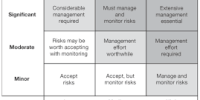Investment Mechanism of IBBL:
The special feature of the investment policy of the Islamic Banking is to invest on the basis of profit-loss sharing system in accordance with the tents and principles of Islamic Shariah. Earning profit is not the only motive and objective of the Banks investment policy rather prominence is given is attaining social good and in creating employment opportunities.
Pursuant to the investment policy adopted by the bank a 7 years perspective investment plan has been drawn up and put into implementation. The plan aims at diversification of the investment portfolio by size, sector, geographical area, economic purpose and securities to bring in phases all sectors of the economy and all types of economic groups of the society within the fold of banks investment operations.
Accordingly the plan envisages composition of the investment profit-folio with for agriculture and rural investment, 16% for industrial term investment, 14% for industrial working capital, 6% for housing and real estate, 6% for transport and communication, 2% for electricity, gas, water and sanitation services, 2% for storage’s 40% for import, export and local trade and trade related activities and 1% for other productive purposes by the end of the plan period, i.e. the year 2002.
Further, in order to diversify investment profit-folio, the bank engaged itself in investment operations through special schemes introduced during the years. The Bank is planning to introduce yet other new investment schemes in addition to welfare oriented investment schemes viz-Rural Development scheme. Transport investment schemes, car investment scheme, small business investment schemes, Doctors investment scheme, Household Durables investment scheme, Housing investment scheme and agricultural implements investment scheme etc. Besides, the bank is financing various economic groups in different sectors in both urban and rural areas for recruitment of their economic condition.
Investment operation of a Bank is very important as the greatest share of total revenue is generated from it, maximum risk is centered in it and the very existence of a Bank mostly depends on prudent management of its Investment Port-folio.
For efficient deployment of mobilized resources in profitable, safe and liquid sector a sound, well-defined and appropriate Investment Policy is necessary.
The important feature of the investment policy of the Bank is to invest on the basis of profit-loss sharing system in accordance with the tenets and principles of Islamic Shariah. Earning of profit is not the only motive and objective of the Bank’s investment policy rather emphasis is given in attaining social good and in creating employment opportunities.
Pursuant to the Investment Policy adopted by the Bank a 7-year Perspective Investment Plan’ has been drawn-up for the year 1995 to 2002 and put into implementation. Recently a further 5-year perspective investment plan has been drawn up for the year 2003 to 2007 and put into implementation. The plan aims at diversification of the investment port-folio by size sector geographical area, economic purpose and securities to bring in phases all sectors of the economy and all types of economic groups of the society within the fold of Bank’s investment operations.
A sound well defined, well planned and appropriate investment policy frame work is a pre-requisite for achieving the goal of the Bank i.e. implementation and materialization of the economic and financial principles of Islam in the Banking area and justice in trade, commerce and industry and to build socio-economic infrastructure, create opportunity for income and sustained economic growth of the country.
Investment Objectives of IBBL:
The objectives and principles of investment operations of the Banks are:
- The investment fund strictly in accordance with the principles of Islamic Shariah.
- To diversifies its portfolio by size of investment, by sectors (public and private), by economic purpose, by securities and by geographical area including industrial, commercial and agricultural.
- To ensure mutual benefit both for the Bank and the investment client by professional appraisal of investment proposals, judicious sanction of investment, close and constant supervision and monitoring therefore.
- To make investment keeping the socio-economic requirement of the country in view.
- To increase the number of potential investors by making participatory and productive investment.
- To finance various developments schemes for poverty alleviation, income and employment generation with a view to accelerating sustainable socio-economic growth and upliftment of the society.
- To invest in the form of goods and commodities rather than give out cash money to the investment clients.
- To encourage social upliftment enterprises.
- To shun even highly profitable investment in fields forbidden under Islamic Shariah and is harmful for the society.
- Ø The Bank extends investments under the principles of Bai-Marabaha, Bai-Muazzal Hire purchase under Shairkatul Meilk and Musharaka. The Bank is making sincere efforts to go for investment under Mudaraba principle in near future.
Salient Features of Investment:
Observance of the legal investment limit of the bank.
Observance of the legal investment limit of the client.
Optimum utilization of investable fund.
Profitability of the investments.
Safety and securtity of the investments.
Investment at minimum possible risk.
Liquidity of investments.
Conform to central bank’s investment restrictions.
Preference to short term investments.
Preference to the investments for small size.
Satisfactory return on investments.
To take in view, inter alia, the following points while considering an investment proposal.
Sector and sectoral performance.
Management of the company.
Location of the company.
Market demand/supply gap, import/export position, consumption trend.
Cash flow position.
Composition of the Port Folio:
Following may lbe the compositions of the investment lport-foloi of the Bank:
- Money Market Port-folio ( having tenor upto one year)
- Capital Market Port-folio (having tenor above one year)
- General Investment Port-folio.
Money / Capital Market Port-folio:
The bank is required to maintain as statutory cash reserve and liquidity requirement, a portion of its depoosit liability in account with the central bank and in approved securities. Beside, the Bank, at its own discretion, may also invest in securities a portion of lits mobilized fund with a view to:
a Improve the qualituy of total assets in avverage;
b. Ensure regular return;
c. Avoid investable surplus and
d. Diversify the overalll port-folio
Moreover, by meeting staturory cash reserve ratio and liquidity requirement, there may, during any working day, remain some funds in between sources and uses thereof. The bank will endeavor to invest the surplus fund in the shariah permitted money market instruments in order to lmaximize ewrring of the Bank.The bank will always truy to take full adveantage of mny opportuinity available to employ daily surplus, if in local money market ioprations and overseas money market.
General market port-folio:
General investment port-folio is not only the major port-folio of the Bank; it also contributes the greatest share of the total revenure generated from alll assets of the Bank.Besides, it is the general investment function whre the bank generally accepts the greatest risk. The failur of a cimmerciall baks is usually associated with the problems in the genreal investment port-folio and is less often the result of shrinkage in the value of other assets. Preciely speaking, most of lthe banks resources are commited to general investments, the bulk of their revenue is genertated by it and the maximum risk is centered in it. As such, this port-folio not only fratures dominant in the asset structure of the Bank, it is also critically inportant to the success of the Bank.
Importance of Assessing Investment Needs:
Assessment of Investment needs is necessary for the following reasons.
To detect actual Investment limit of Bank.
To assess the quality, quantity, price and marketability of the commodities
To ensure proper follow-up supervision and monitoring of the Investment.
To ensure capacity of the client in handling Investment activities.
To ensure trading instead of lending of money.
To ensure payment against delivery of goods.
To ensure actual buying and selling of goods.
To select proper & genuine Investment client.
To ensure viability/profitability of the project.
To ensure compliance of Shariah Principles.
To secure the Investment.
To allow Investment for appropriate period.
To ensure investment for productive purpose.
To know the objective of Investment.
To ensure welfare of the society.
To ensure Business ethics.
To minimize the risk of investment.
To ensure recovery of investment in time.
Strategies:
Risk in the investments and return thereon are interrelated. An investment policy that emphasizes a high return must axxept relatively high risk. Converselyh, an investment policy that will tolerate only small amount of risk must be prepared to accept a relatively low return.
As such, it is really diffeicult whether to select a high return port-folio wyt high risk or low risk port-folio with a low retrun.
Neverthless, considering all aspects following guidelinges shall be followed as stratrgy for bankls investmentys.
- If towo port-folios have the same risk but different returns, the port-folio having higher return shall be preferred.
- If the two port-folios have thesame expected rrturns, buyt different degrees of risk, the port-folio with lower risk shall getr prefrednce.
- If onme port-folio has botyh a higher return and a lower risll than another, the first port-folio shall be freferred.
- Keeping in view the risk factor, the bank shall maintain flexibilityu in derermaination of rate of return on investments on case to case basis in cosideration of the risk element involved in the respective incestment.
- Emphasis is given for expansion and strengthening cottage and small industries sector and rural industries. This immensely potential industrieal sub-sector shall create empolement opperptunities to rural and semi-urban polpulation and shalll have positive contribution in employment and income genreation and poverty alleviation of the low-income group.
- Investment facilitees shall be ectended for establisement and ecpansion of ecport oriented forward / back wared lingkage and import substiturte industries.
- The bank requires retaining 10% of itrs total deposit liability as Statutory Liquidity Ratio (SLR) including 4% Cash Reserve Ratio (CRR) with the Central Bank. The bank may go for investmnents upto 90% of itas total depostt. The perspective investment plan is being formaulated quantifying the allocation of investmentns size-wise, sector-wise, geographicall area-wise, economic purpose-wise, secutity-wise and mode-wise keeping in view 20% projected growth of deposit each year.
- Taking into consideration the broad objectives of the bank, national priority, sociao-economic need, growth level of the economy, the investments port-folio of the bank may gradually be diversified and allocated in term of size, sector, geographical area, economic purpose, secutity and mode.
- Saftey, security, profitability and liquidity of Bak’s investments.
- Each brach invests, at least 50% of its deposits locally.
- Enhanc of extenting limit of good investment clients.
- Adopting of modern technology
So, banks investment policy, investment planning and investment budgeting, till situation changes / inproves, shall aim at promotion of quqality general investment.
Evaluation of the Bank’s Investment Portfolio:
The Bank should go for investment in large-scale dairy farming and other milk processing projects and poultry farming which is not worth mentioning at present.
- The quantum of Bank’s investment against fishing is very negligible. There is scope for investment in :
- Shrimp culture.
- Sweet water fishery including pond fishery.
- Marine fishing.
- The Bank’s investment for construction purpose shall continue to be made within the ceiling prescribed in the Plan.
- Presently the Bank’s export Investment is mostly centered in readymade garments and the Bank is yet to enter into the area of investment in major traditonal and non-traditional exportable items like jute & jute goods, frozen foods, hosiery products, tea, leather and leather products knitwear (Textile), basic chemical products/pharmaceuticals, electric goods (wires and cables), electronic goods/components, handicrafts, fruit juice concentration projects (small and medium scale only), other.
- Besides the existing items of import, the Bank should go for investment in import in the following areas :
- CDSO being imported by edible refineries.
- Cotton yarn.
- Coal and hard coke.
- Fresh fruits.
- Spices.
- Dry fruits
- Pulses
- Bitumen
- Other items
- A. Investment against real estate of the Bank shall continue to be made within the ceiling prescribed in the plan.
B. The bank’s investment against agriculture, fishery, forestry, (other than working capital investment) and working capital investment are not significant compared to other private commercial banks. As such, the Bank shall make attempt for extension of investment in these sectors.
Investment Perspective Plan 2003-2007:
In accordance with the investment policy, 5 year perspective investment plan from 2003 to 2007 is formulated. Deposit target of the bank as on 2002 plus 10% has been taken as base and 90% of the lyrar-wise estmeated deposits have been taken as investable fund. size-wise, sector–wise, geographical area-wise, economic purpose-wise, security-wise, mode-wise allocation of estimated investable funds are made in accordance eith the wegtage given in the investment plan as shwon in table A, B, C, D, E, F
Table-A
Investment distribution by size of accounting
year | investable fund 90% of total deposits | Up to Tk.50 M | Above to Tk.5 0 M to Tk.1.00 M | Above to Tk.1.00 M to Tk.2.50 M | Above to Tk.2.50 M to Tk.5.00 M | Above to Tk.5.00 M | Total |
| 2003 | 90% | 20% | 11% | 16% | 13% | 40% | 100% |
| 2004 | 90 | 20 | 11 | 16 | 13 | 40 | 100 |
| 2005 | 90 | 20 | 11 | 16 | 13 | 40 | 100 |
| 2006 | 90 | 20 | 11 | 16 | 13 | 40 | 100 |
| 2007 | 90 | 20 | 11 | 16 | 13 | 40 | 100 |
Table-B
Investment distribution of by sector-wize (private & public)
year | investable fund 90% of total deposits | Public sector | Private sector | Total |
| 2003 | 90% | 5% | 95% | 100% |
| 2004 | 90 | 5% | 95% | 100% |
| 2005 | 90 | 5% | 95% | 100% |
| 2006 | 90 | 5% | 95% | 100% |
| 2007 | 90 | 5% | 95% | 100% |
Table-C
Investment distribution of by Area-wise (Urban and Rural)
year | Investable fund 90% of total deposits | Urban | Rural | Total |
| 2003 | 90% | 6% | 94% | 100% |
| 2004 | 90 | 7% | 93% | 100% |
| 2005 | 90 | 8% | 92% | 100% |
| 2006 | 90 | 9% | 91% | 100% |
| 2007 | 90 | 10% | 90% | 100% |
Table-D
Distribution of investment by Economic Purpose
year | Investable fund 90% of total deposits | Agricultur, fishing and forestry | Industry | Working capital | Construction, real estate | Electricity, gas, water & sanitary services | Transport & communication | Storage |
| 2003 | 90% | 2% | 18% | 15% | 10% | .5% | 5% | 1% |
| 2004 | 90 | 2 | 18 | 15 | 10 | .5 | 5 | 1 |
| 2005 | 90 | 2 | 18 | 15 | 10 | .5 | 5 | 1 |
| 2006 | 90 | 2 | 18 | 15 | 10 | .5 | 5 | 1 |
| 2007 | 90 | 2 | 18 | 15 | 10 | .5 | 5 | 1 |
House hold durable scheme | Small business investment | Doctors investment | Poultry dairy | Ural development RDS | Micro industry | Others | Miscellaneous | Total |
| 1.5% | 1.5% | .5% | .5% | 2% | .5% | 1% | 1% | 100% |
| 1.5 | 1.5 | .5 | .5 | 2 | .5 | 1 | 1 | 100 |
| 1.5 | 1.5 | .50 | .5 | 2 | .50 | 1 | 1 | 100 |
| 1.5 | 1.5 | .5 | .5 | 2 | .5 | 1 | 1 | 100 |
| 1.5 | 1.5 | .5 | .5 | 2 | .5 | 1 | 1 | 100 |
Table-E
Investment distribution by Securities
year | investable fund 90% of total deposits | share securities | Marsendise | machinery with fixed assets | Real estate | financial obligation | miscelianeous | Total |
| 2003 | 90% | 2% | 70% | 15% | 8% | 3% | 2% | 100% |
| 2004 | 90 | 2 | 70 | 15 | 8 | 3 | 2 | 100% |
| 2005 | 90 | 2 | 70 | 15 | 8 | 3 | 2 | 100% |
| 2006 | 90 | 2 | 70 | 15 | 8 | 3 | 2 | 100% |
| 2007 | 90 | 2 | 70 | 15 | 8 | 3 | 2 | 100% |
Table-F
Investment distribution by Mode
year | investable fund 90% of total deposits | Bai-Mode | Ijara Mode | Share Mode | Purchase & Nogotiation | Quard | Total |
| 2003 | 90% | 65.5% | 20% | 7.5% | 5% | 2% | 100% |
| 2004 | 90 | 62.5 | 21 | 10. | 5 | 2 | 100% |
| 2005 | 90 | 58.5 | 22 | 12.5 | 5 | 2 | 100% |
| 2006 | 90 | 55.0 | 23 | 15 | 5 | 2 | 100% |
| 2007 | 90 | 52.0 | 24 | 17 | 5 | 2 | 100% |
















